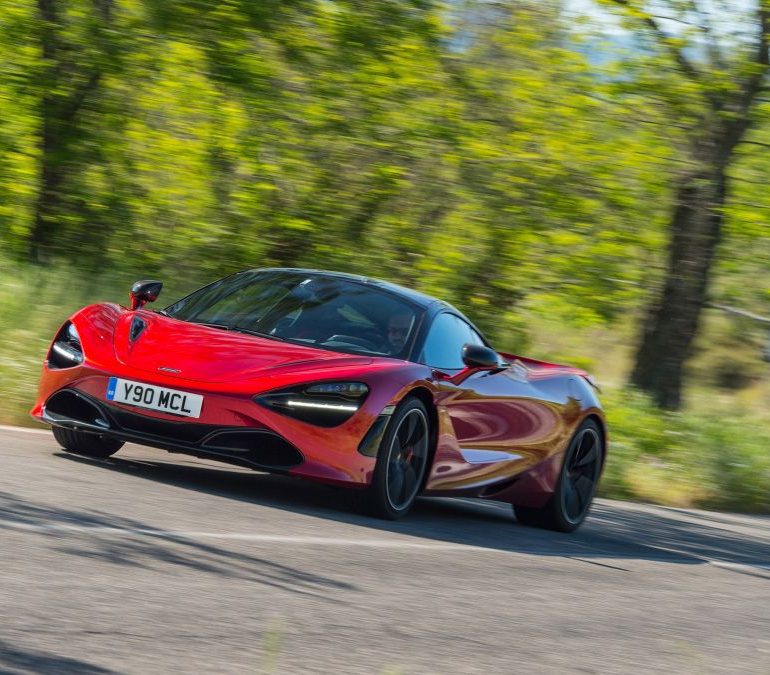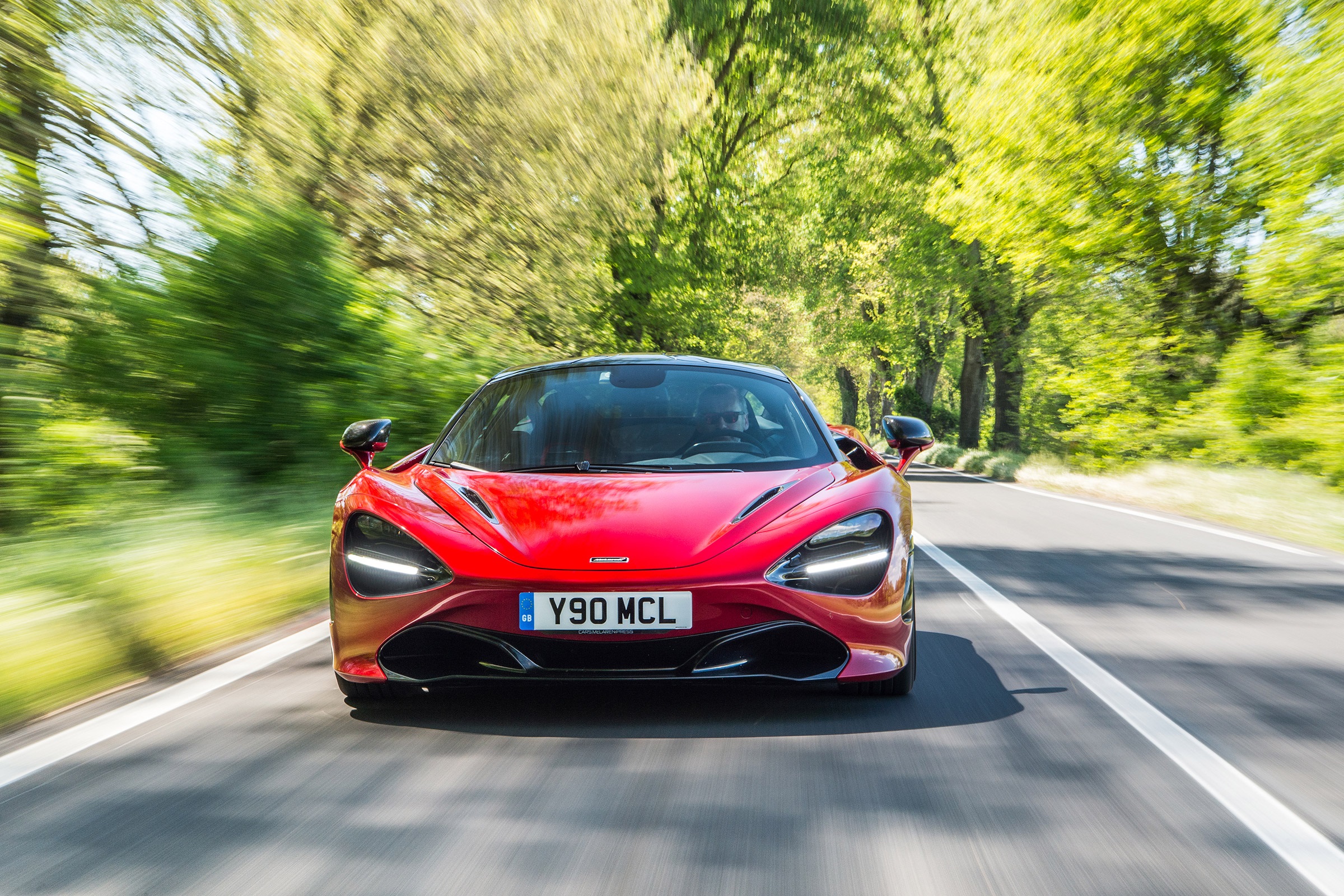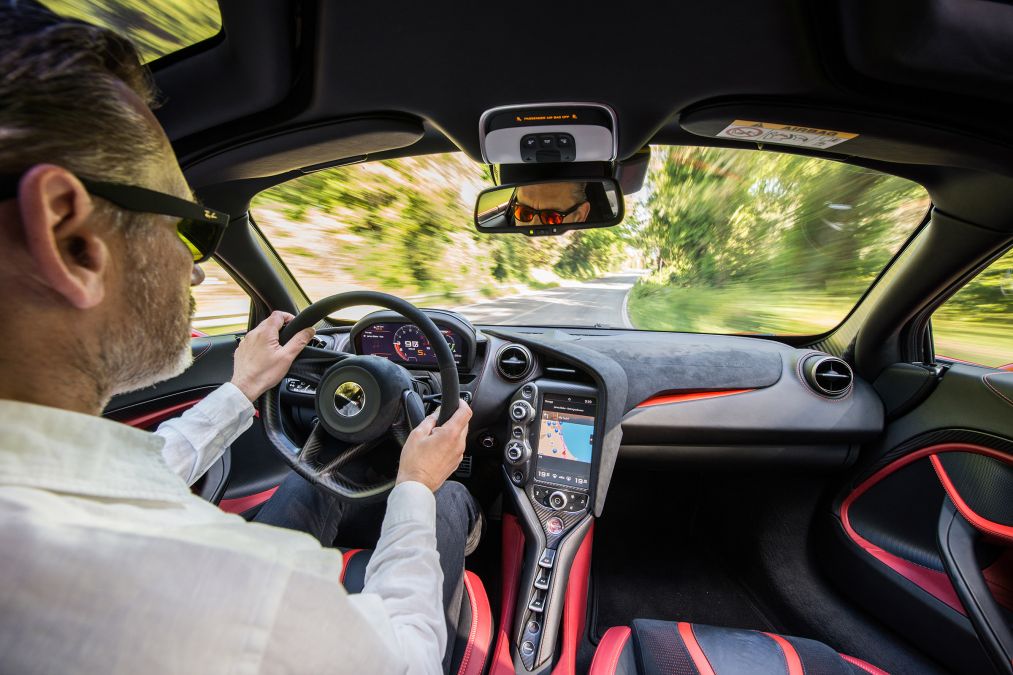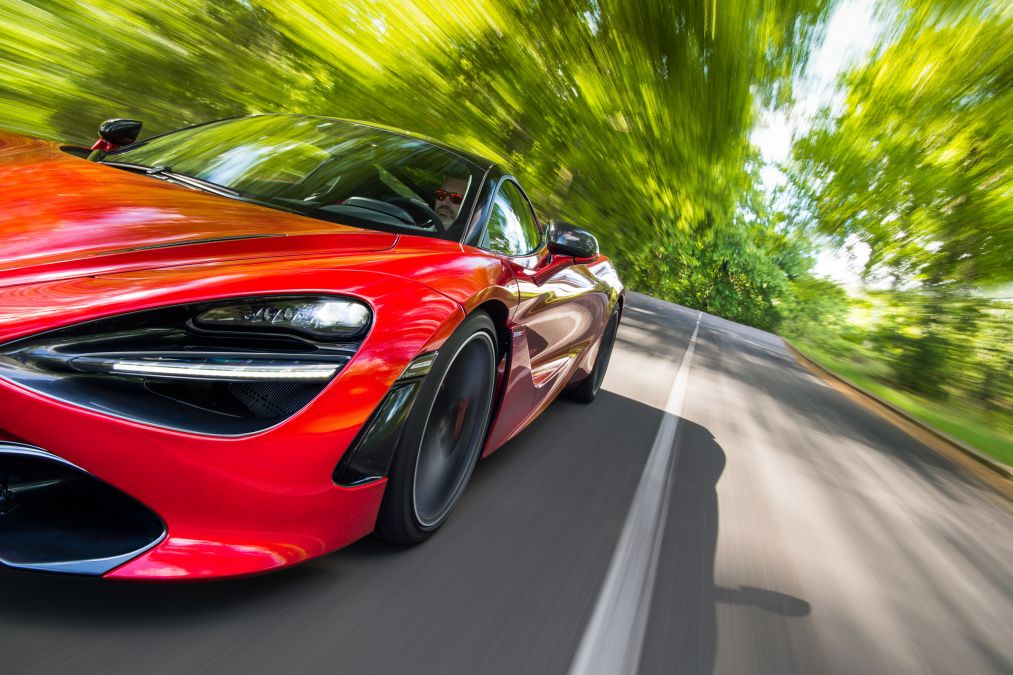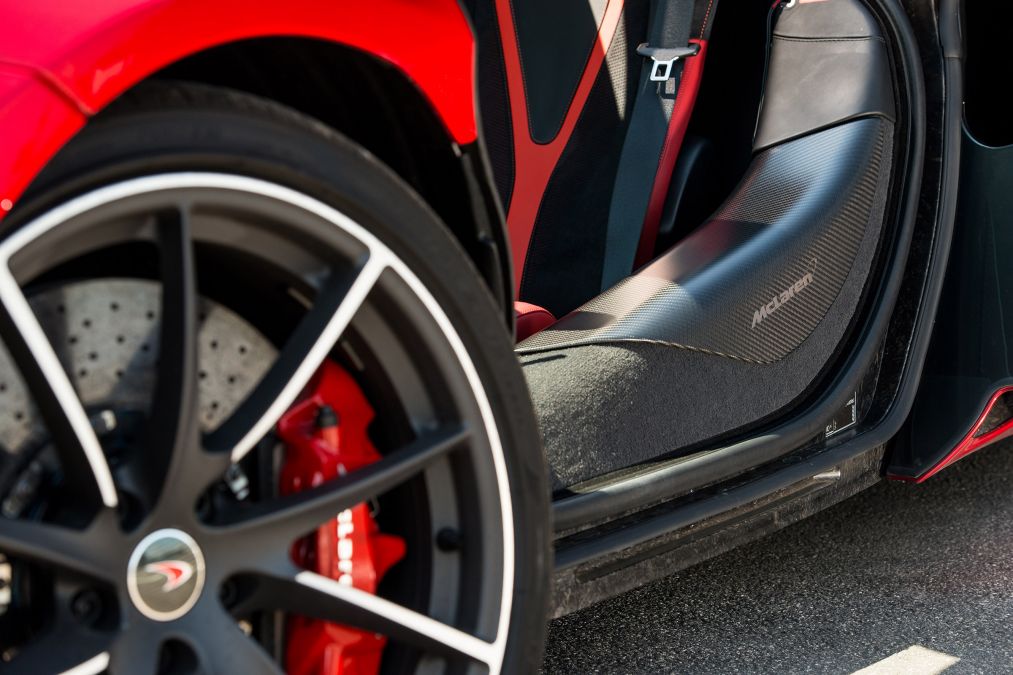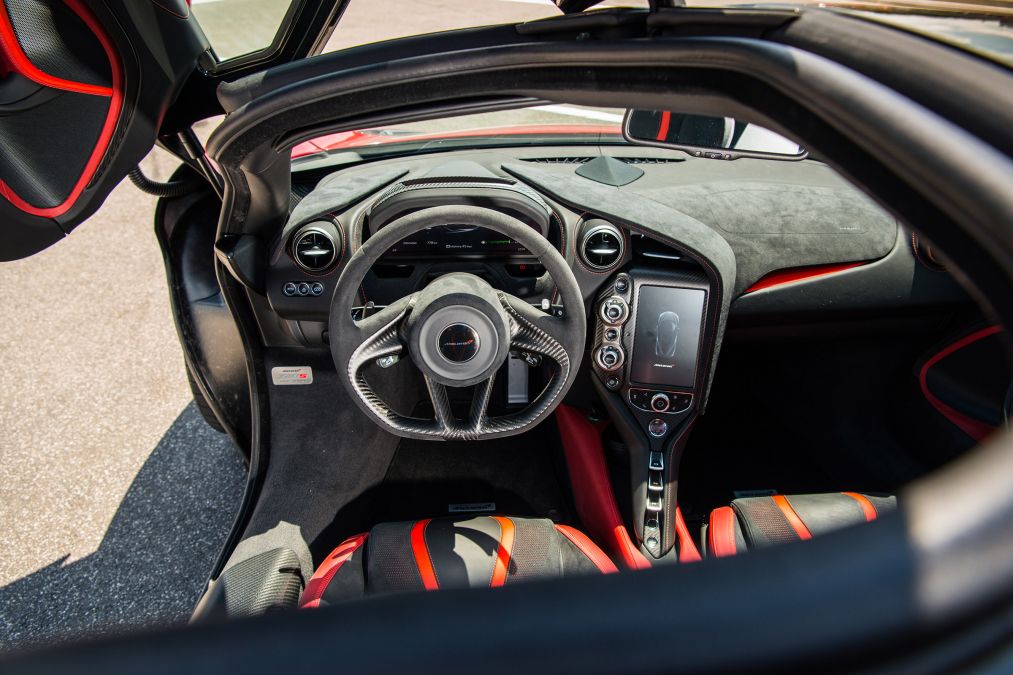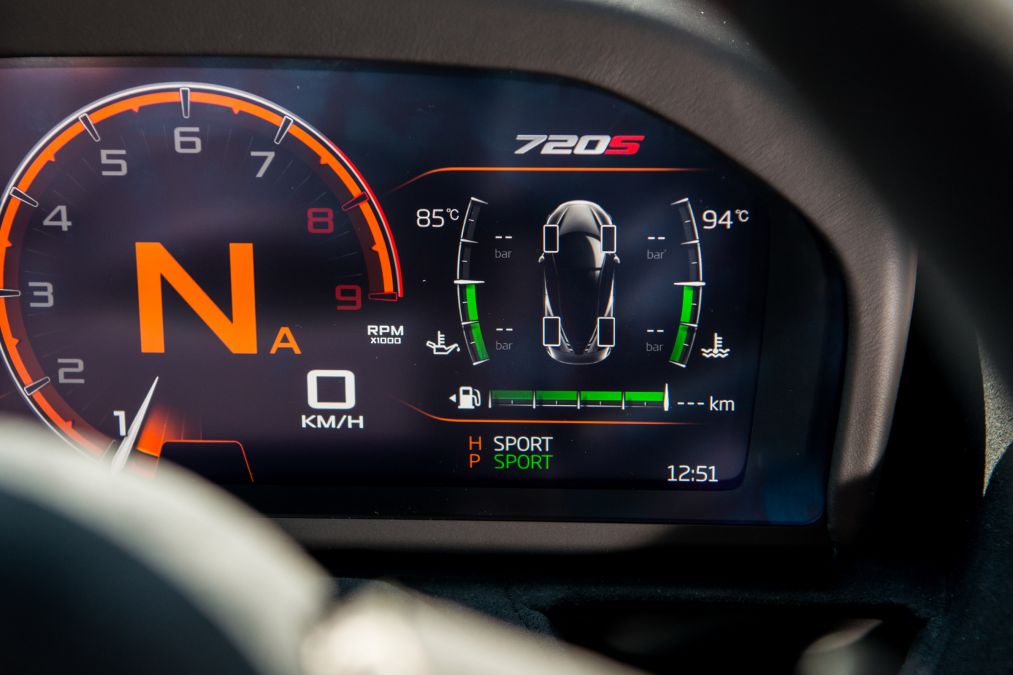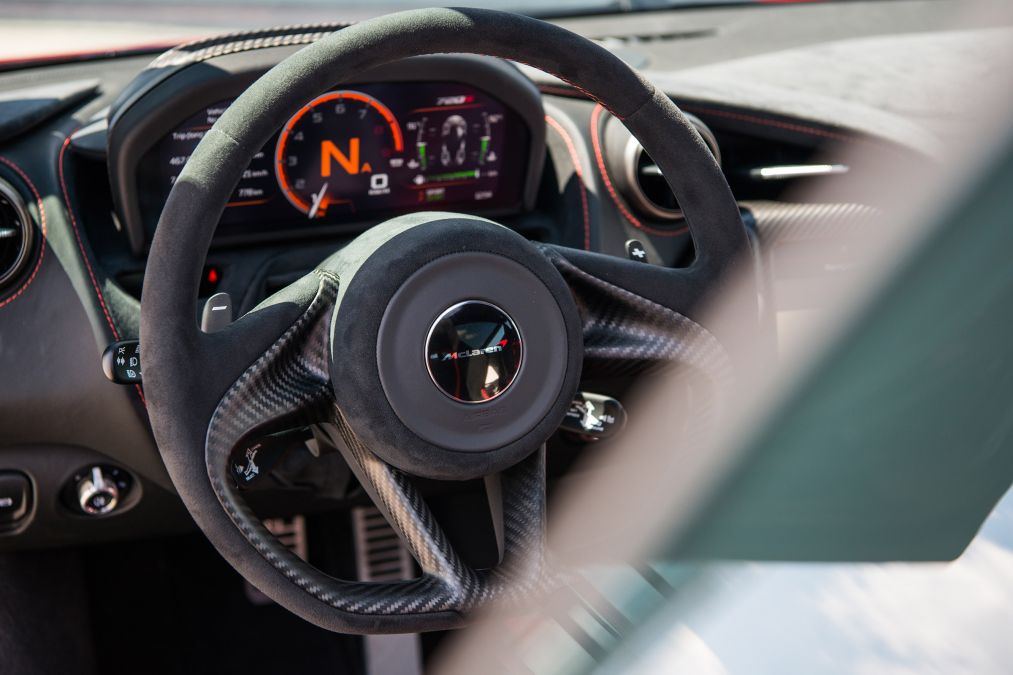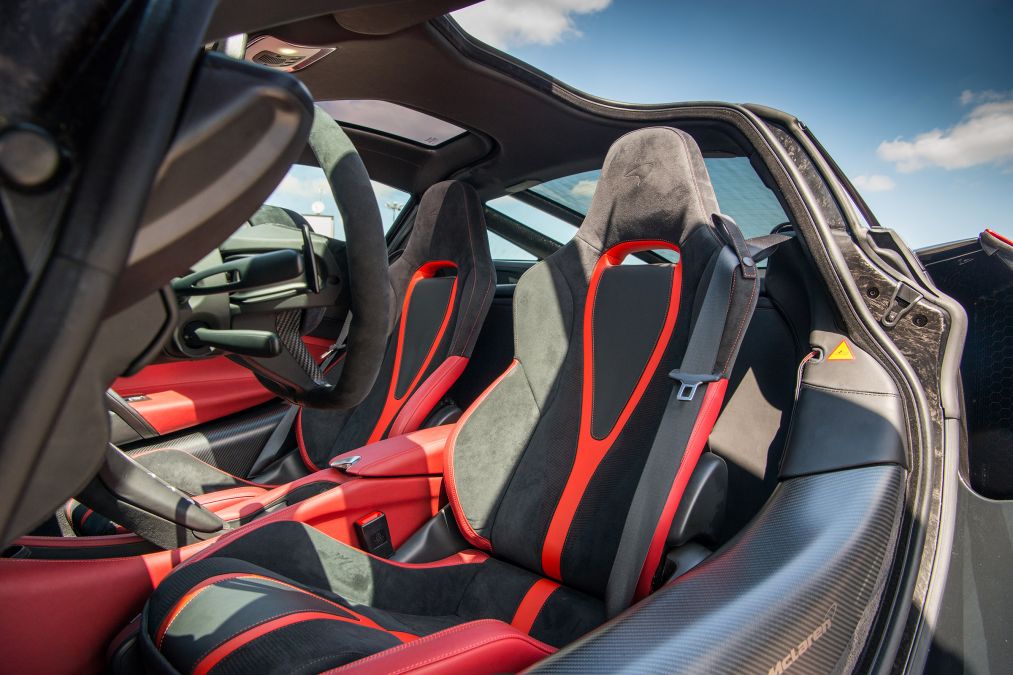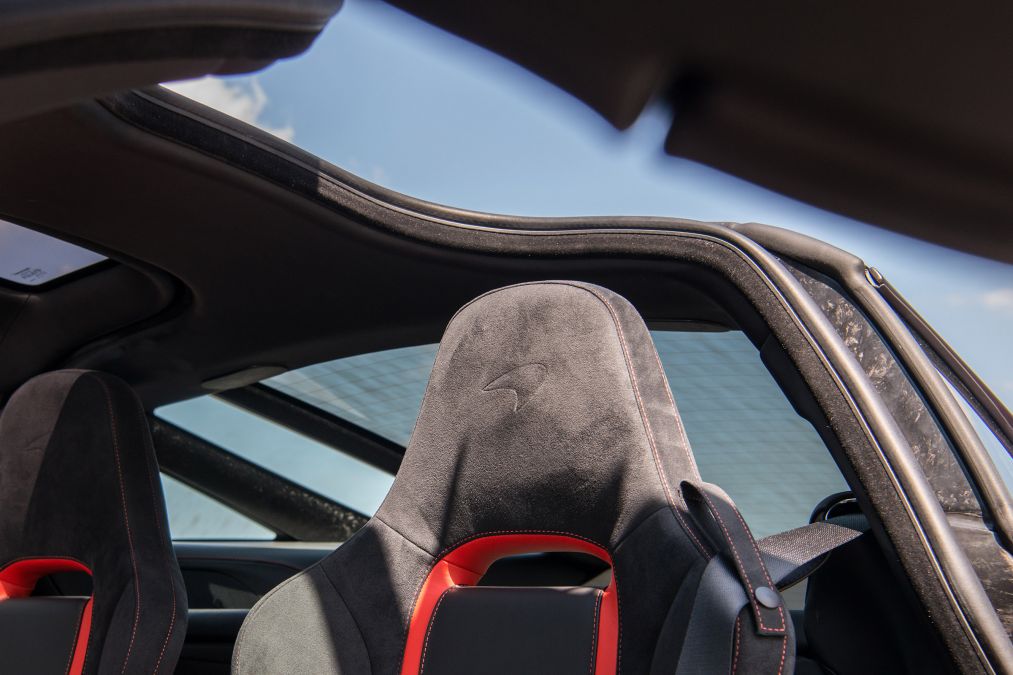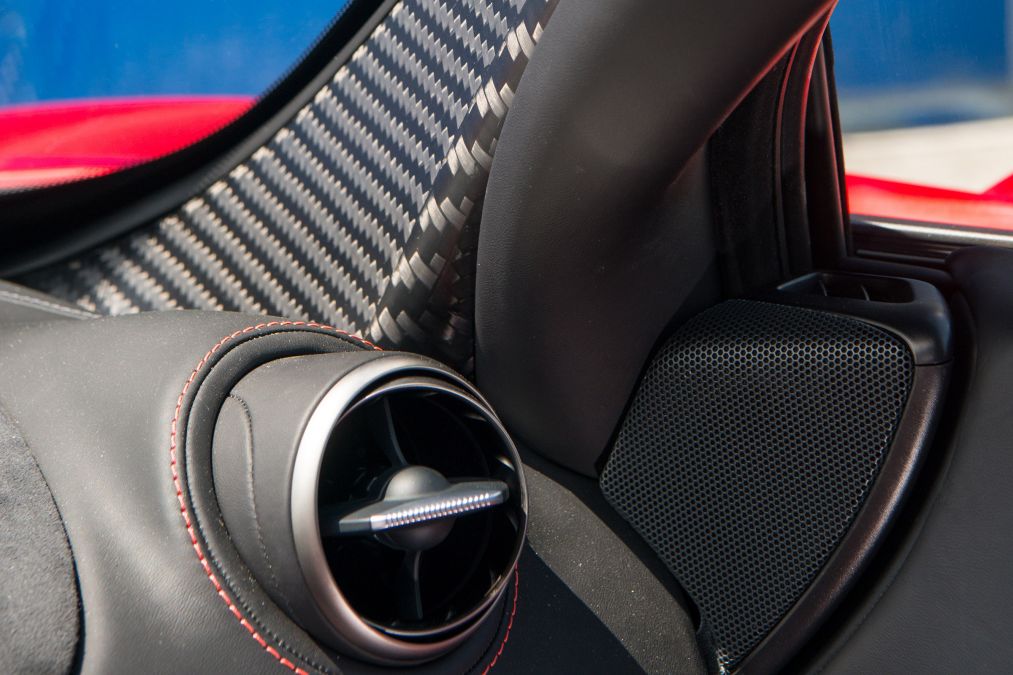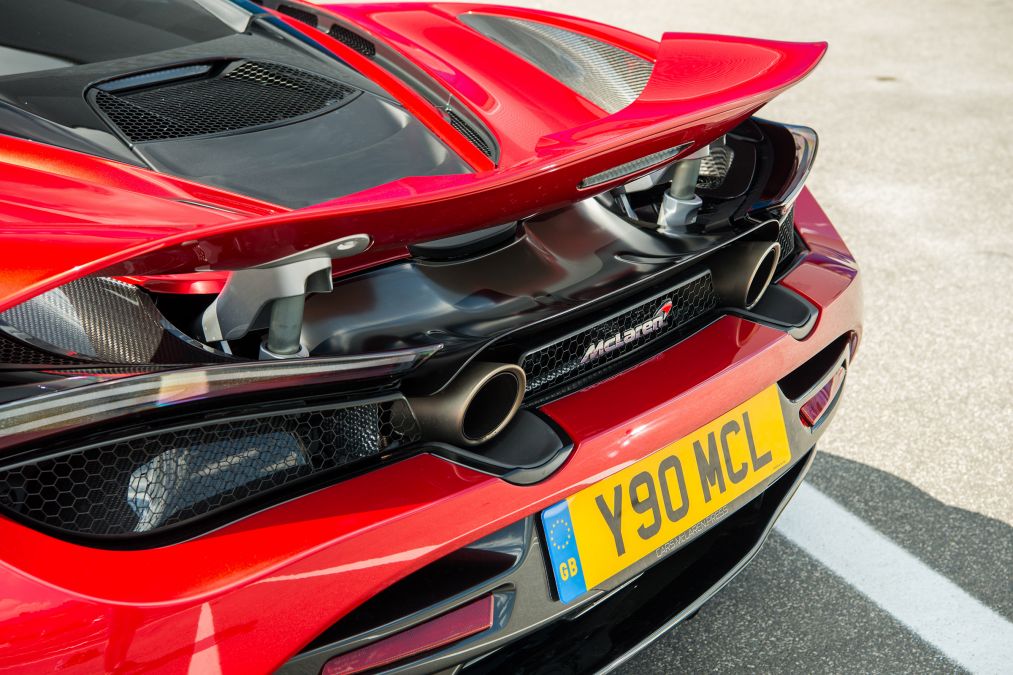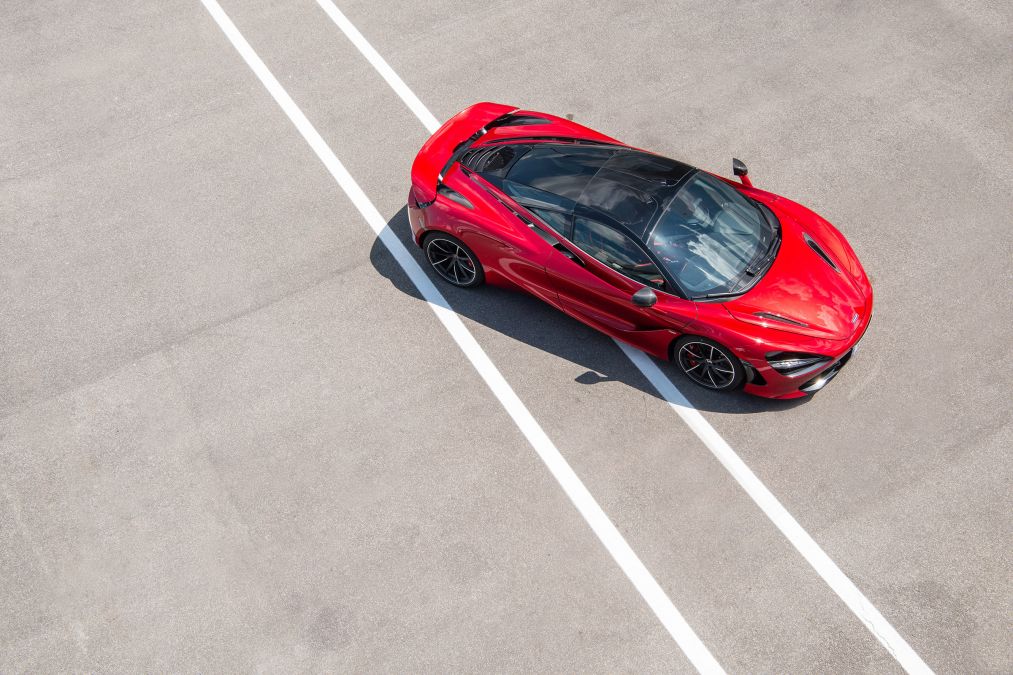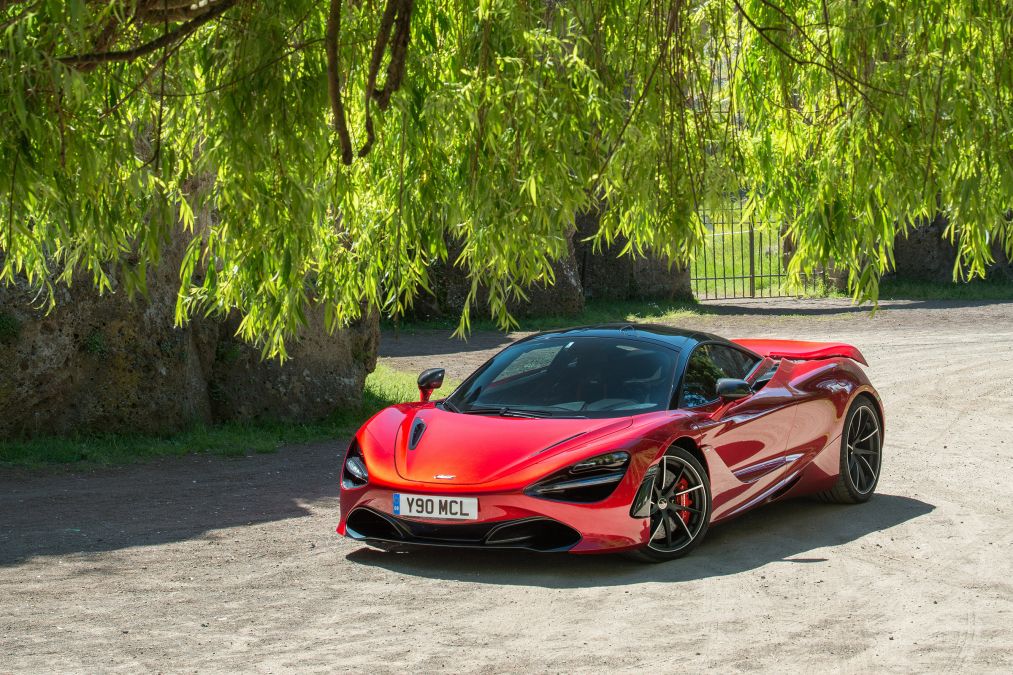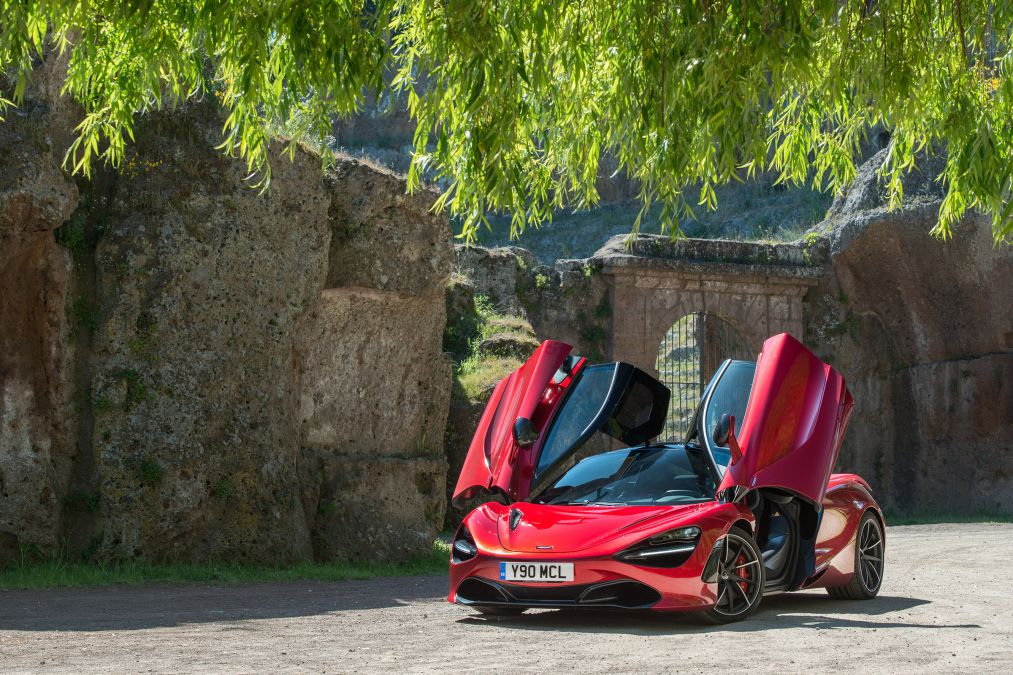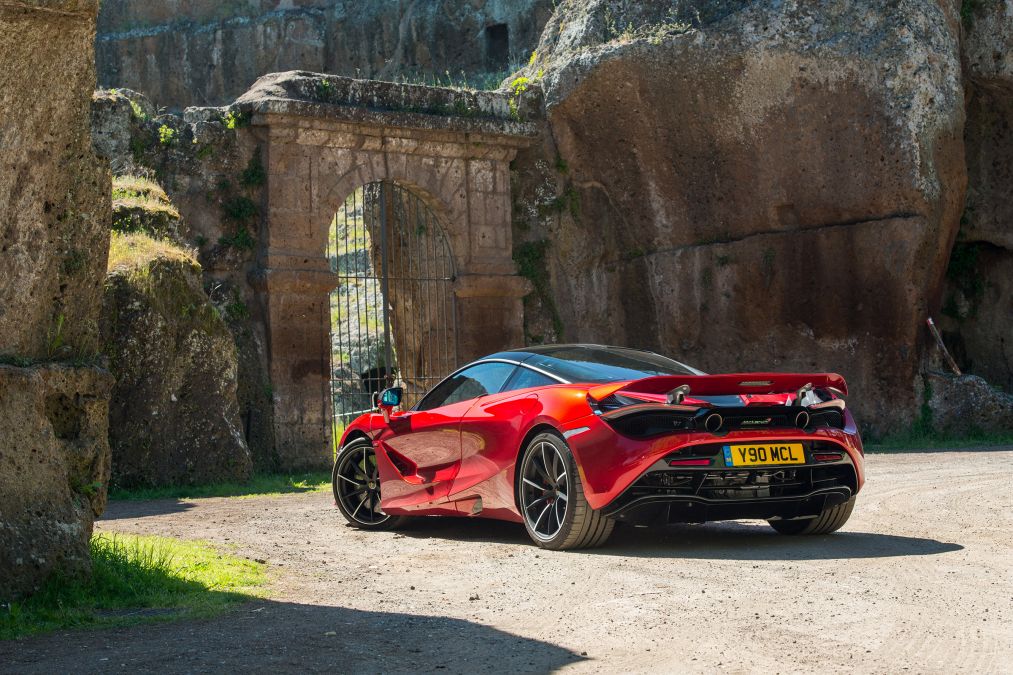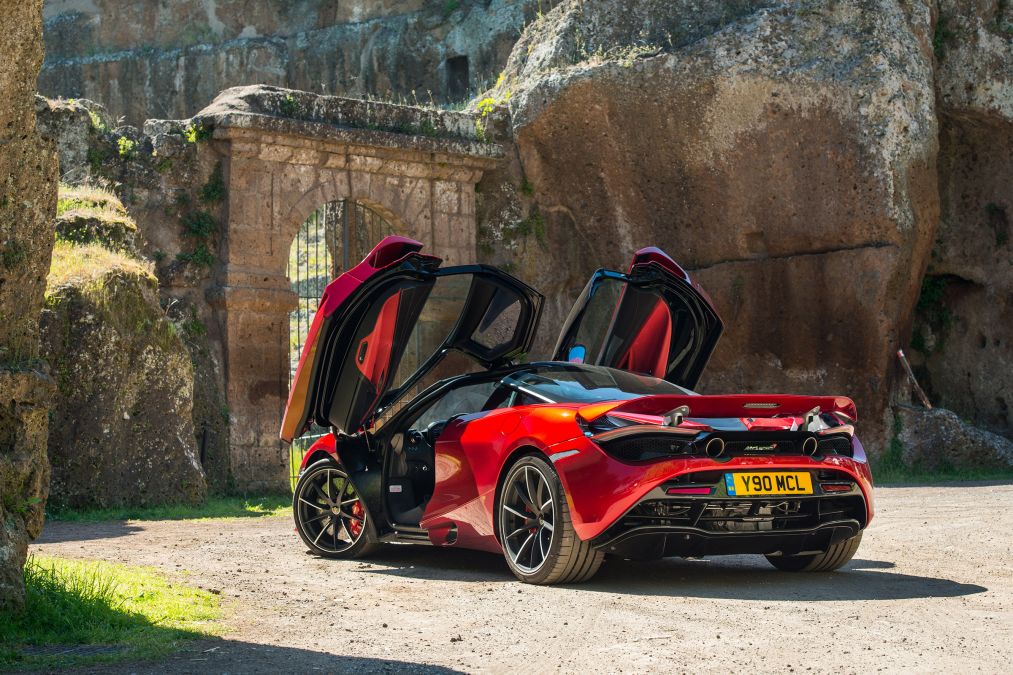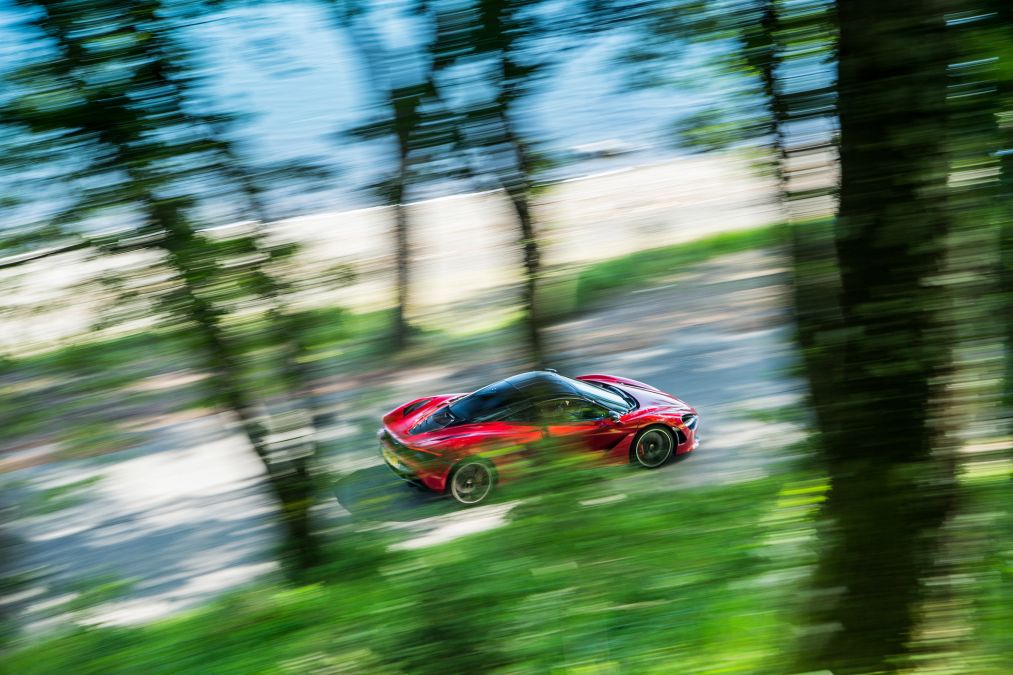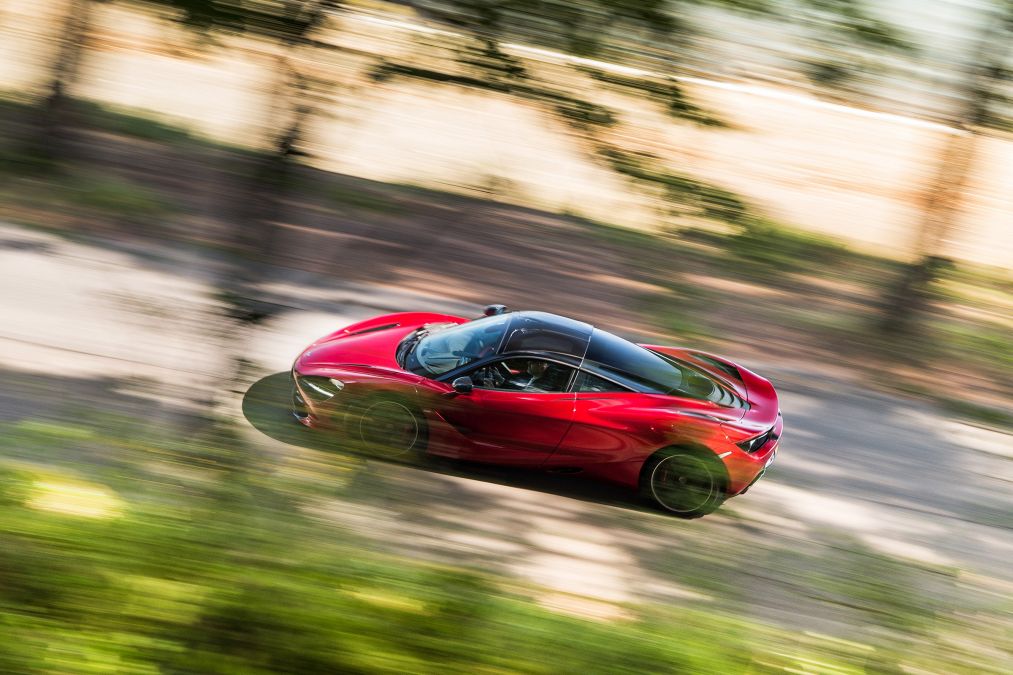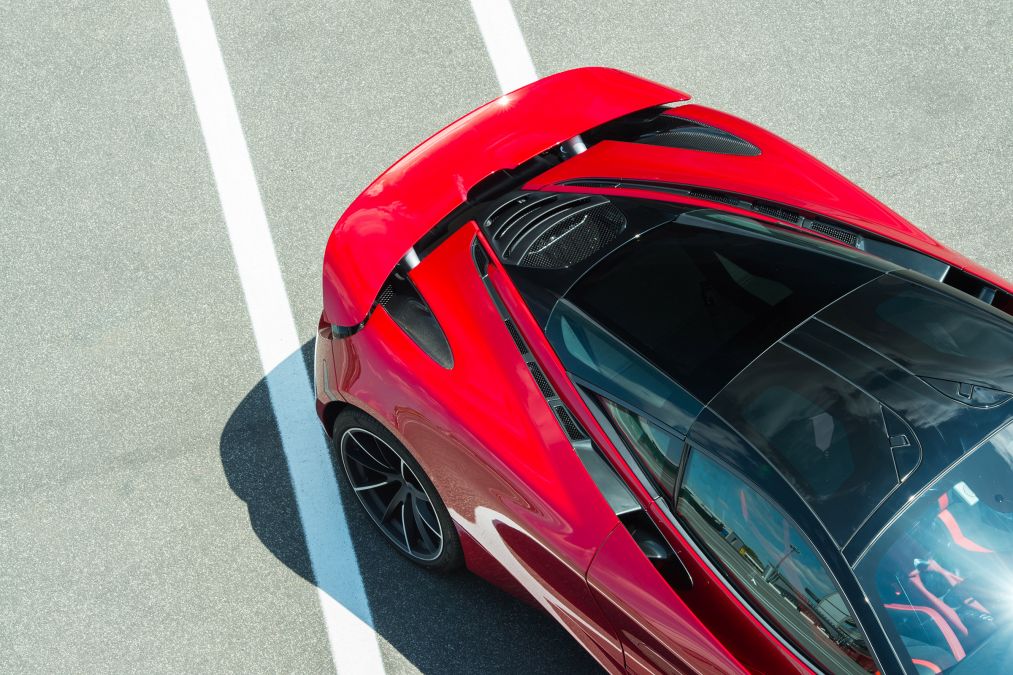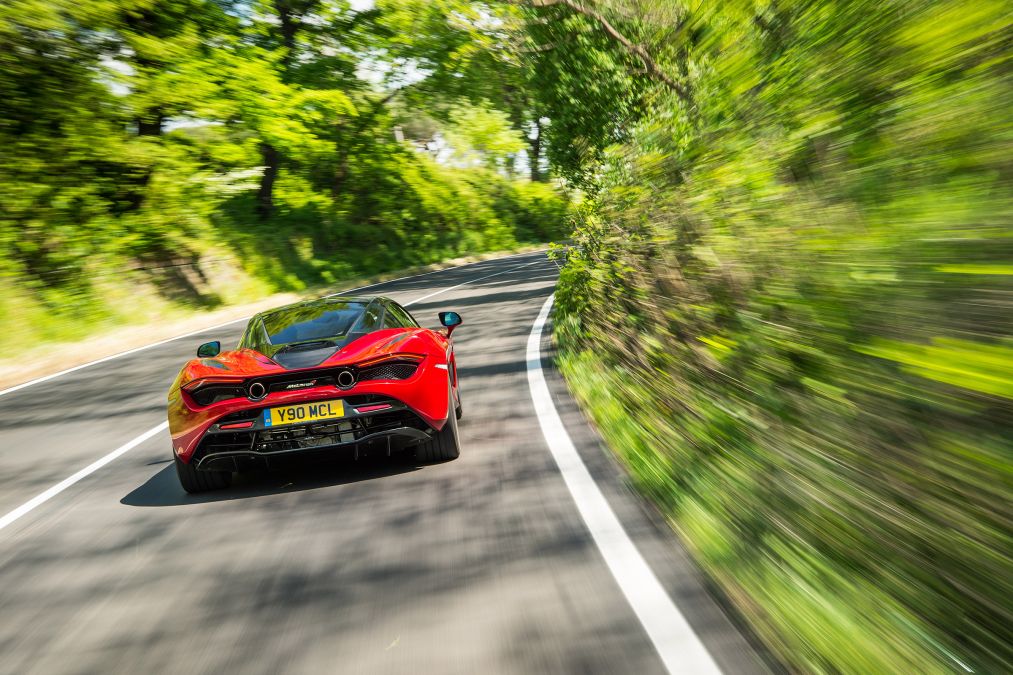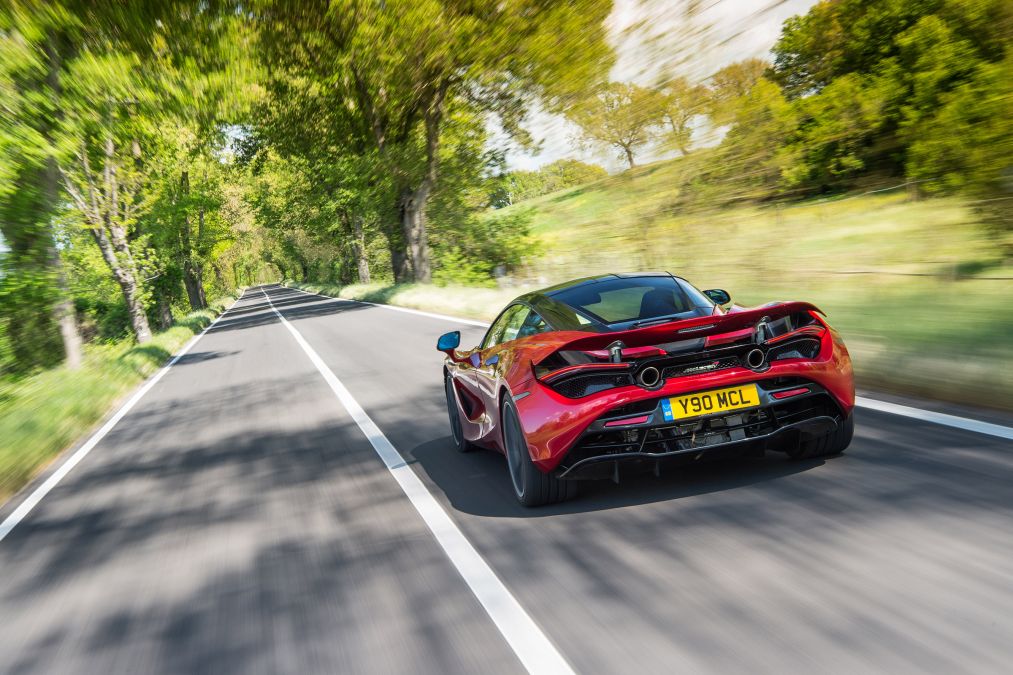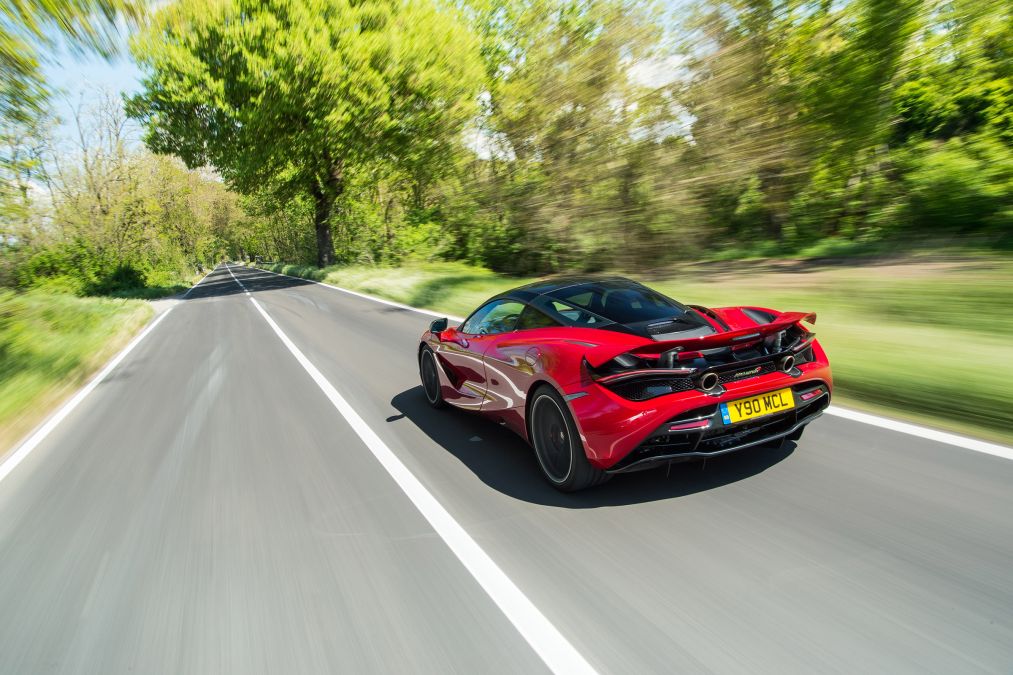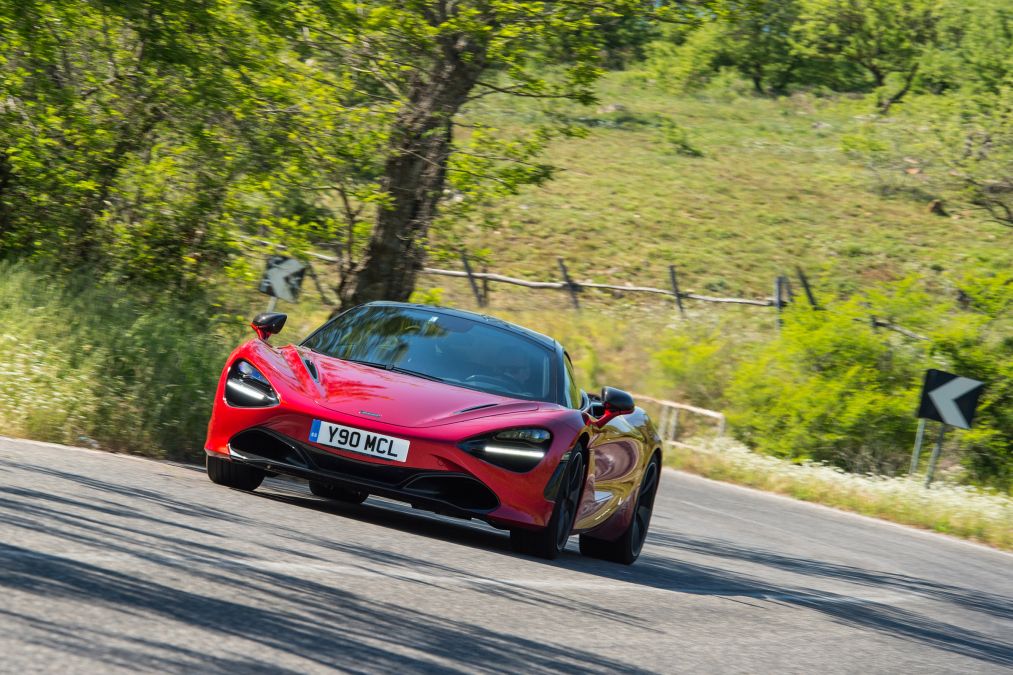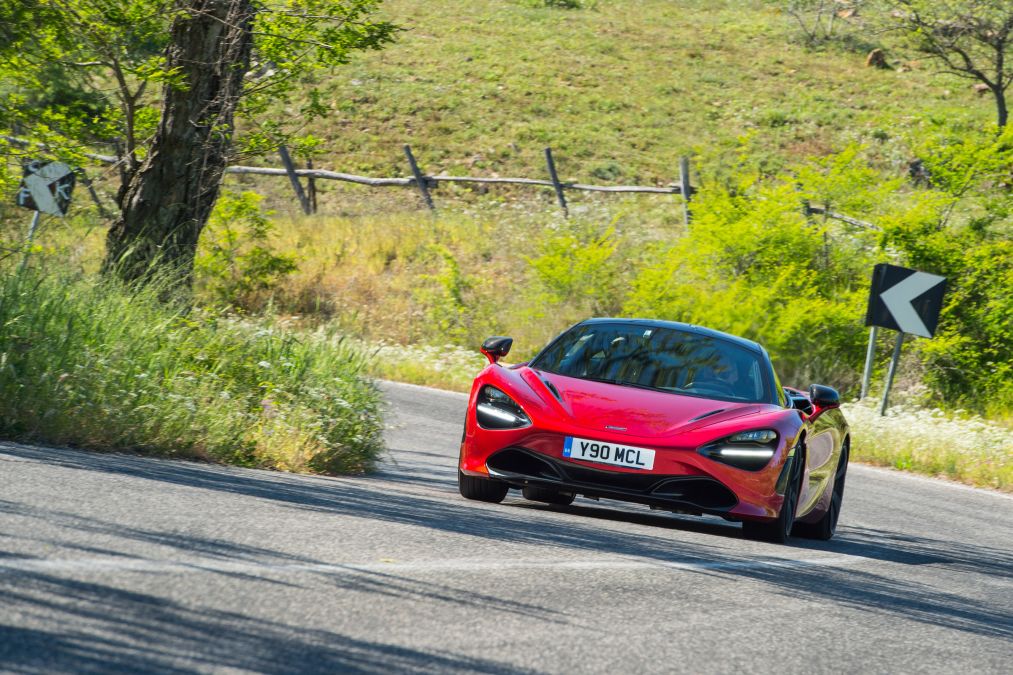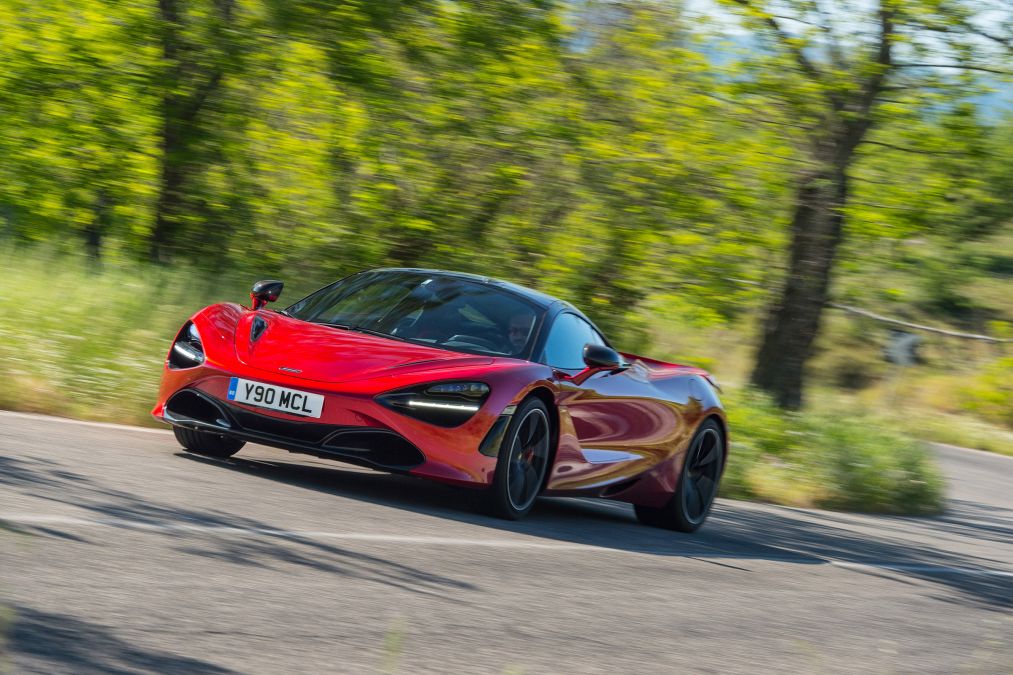McLaren’s new all-scenarios ‘Super Series’ supercar, and thus the successor to the 650S and 12C. It has an all-new body design made from superformed aluminium with gullwing doors and lots of concealed vents and ducts for a smooth appearance – apart from the signature ‘eye socket’ headlamp-cum-air intakes. The bi-turbo V8 engine is bigger at 4.0-litres, developing a monster 710bhp (720ps), and the suspension is a revised version of the original ‘Proactive Chassis Control’ (PCC), with more sensors, that manages roll and pitch even more effectively. In short, it’s not just a new look, it’s a faster, more capable car. And it features a drift-mode, too.
The new ‘M840T’ 4-litre version of the flat-plane crank V8 is the first up-sizing of the engine and is said to be 41 per cent new. Compared with the 3.8 in the 650S, power goes up almost 70bhp and torque by 68lb ft, again fed through the seven-speed dual clutch ‘SSG’ gearbox. Weight has been saved, to the tune of 18kg comparing dry weights, and performance is astonishing – 0-60mph in 2.8sec (3.0sec for 650S), 0-124mph in 7.8sec and a top speed of 212mph (207mph).
The heart of the car is the carbonfibre tub, dubbed ‘Monocage II’, which now incorporates the windscreen hoop, saving weight in a crucial area versus the metal version on previous Super Series cars.
However, the change that should be most noticeable is to the suspension. The new control system for the cross-linked hydraulic set-up (which does without anti-roll bars) adds another ECU and a dozen more sensors to know more accurately what the car is doing and what road inputs there are. Using that information, it goes to look-up tables to determine how the car should respond. It’s the fruit of a PhD project that has been in development for five years. It’s said that the superior wheel control it brings improves braking to P1 levels and cornering to trackday-tyre levels, all on the latest spec ‘everyday’ P-Zero with its all-weather performance and ride-enhancing suppleness.
The human-machine interface is marginally improved, especially switchgear tactility, and there are certainly none of the chassis foibles that characterised the first MP4-12C and, to a lesser degree, the 650S – the sensation that there was occasionally diagonal pitching and that the car wasn’t quite as firmly tied down as it could be.
The feeling that ride comfort was gained at the expense of handling was less the case with the 650S and the 720S moves things to another level with exceptional ride comfort for a supercar and the roll- and pitch-free control you’d expect in the corners. It’s sensationally quick and control is clean and precise, and yet it isn’t as exciting as you’d hope.
A large part of this is down to the lack of an exciting engine note – just a lot of hissing and wooshing as large amounts of air are ingested, compressed and turned into power, rather than what a supercar should have, namely a thrilling, engaging engine note.
On track, Variable Drift Control didn’t seem to make slides any easier, either – you still need to be brave to initiate them and the car doesn’t seem to behave consistently. Loosening the ESP control to the ‘dynamic’ setting seems to do pretty much the same job, ie not letting the car get too far out of line.
The 720S takes the Super Series car well into the £200k bracket. It costs £208,600 in base form, and there’s lots you can add to make the car more bespoke. The list includes the lovely, exposed carbonfibre A-pillars on the inside, transparent panels for the gullwing doors for the full glasshouse experience and a McLaren track telemetry app.
It makes the 661bhp Ferrari 488 GTB look like a bit of a bargain at just over £183k, especially given how it conjures more excitement from a similar engine and a remarkably adept chassis.
2017 McLaren 720S Press Release
McLaren 720S revealed: full information and unpublished images of the dawn of a new era for McLaren’s Super Series
- McLaren 720S introduces the second-generation Super Series, the supercar product family at the heart of the McLaren brand
- Stunning new interpretation of McLaren design language and dedication to aerodynamic principles, personifying the brand’s extreme performance DNA
- Carbon fibre chassis based around Monocage II central structure key to the 1,283kg lightest dry weight and unparalleled interior space and visibility
- Luxurious, driver-focused cabin, featuring the finest leathers and aluminium switches
- New 720S delivers outstanding driver engagement, with best-ever Super Series aerodynamic efficiency and new generation of McLaren’s active chassis system, Proactive Chassis Control II
- Widest breadth of dynamic capability of any McLaren, ranging from precise, controlled comfort to the most extreme handling prowess
- New, twin-turbocharged 4.0-litre V8 engine produces 720PS and 770Nm, with power-to-weight ratio of up to 561PS per tonne
- 0-60mph in 2.8 seconds (0-100km/h 2.9 seconds), with 0-200km/h (124mph) reached in 7.8 seconds and maximum speed of 212mph (341km/h)
- Braking from 200 km/h to standstill in 4.6 seconds, covering 117m
- Deliveries of McLaren’s new supercar will commence in May: prices start at: £208,600 (UK)
The new McLaren 720S makes its global debut today (March 7) at the 87th Geneva International Motor Show, introducing the second-generation of McLaren’s Super Series and simultaneously raising previously accepted limits of performance in the supercar sector.
“Super Series is the core of the McLaren business and personifies the blend of extreme performance, crafted luxury and unparalleled driver involvement that is the McLaren heartland. This is the first time we have replaced a product family and the new 720S is absolutely true to McLaren’s pioneering spirit in being a revolutionary leap forwards, both for our brand and the supercar segment.”
Mike Flewitt, Chief Executive Officer, McLaren Automotive
The unveiling of McLaren’s new supercar confirms both the 720S name and 720PS horsepower of the first model in the second-generation McLaren Super Series, details which have been teased online in recent months. The Surrey, England-based manufacturer of luxury, high-performance sports and supercars, has issued a series of six press releases since January, each accompanied by an image or film containing a numerical reference – and it can now be revealed that 1 x 2 x 3 x 4 x 5 x 6 equals 720…
The new 720S is lighter, faster and even more dynamically capable than its McLaren 650S predecessor, with unparalleled levels of interior space and sophistication and a breadth and depth of abilities that will engage and exhilarate the driver. One glance at the 720S identifies it as a bold reinterpretation of McLaren’s design language; rooted in aerodynamic principles, the beautiful form has nothing superfluous about it: immediately and undeniably a McLaren, the new 720S is arguably the most distinctive and remarkable McLaren yet.
One of the key points in the design of the new Super Series is the absence of radiator intakes on the side of the car; this function is carried out instead by the unique ‘double-skin’ aerodynamic form of the dihedral doors, which channel air to the high-temperature radiators that cool the mid-mounted engine.
The new M480T engine powering the 720S continues the lineage of McLaren’s multiple-award-winning, twin-turbocharged V8 engine series. The 4.0-litre engine, which has 41 percent new part content compared to the 3.8-litre engine that continues to feature in the McLaren Sports Series, generates a maximum of 720PS and 770Nm of torque.
Performance is truly astonishing: standstill to 100km/h (62mph) takes less than 3 seconds and just 5 seconds later the car has passed the 200km/h (124mph) mark on its way to a maximum speed of 341km/h (212mph). Braking is equally impressive, the new 720S coming to a halt from 200km/h (124mph) in just 4.6 seconds, covering 117m. Additionally, the extreme efficiency of the engine also goes beyond mere velocity: the new McLaren 720S delivers 10.7 litres/100km combined fuel economy and CO2 emissions of just 249g/km in the New European Driving Cycle (NEDC).
McLaren’s expertise in carbon fibre structures – every road car built by the British manufacturer since the McLaren F1 in 1993 has had a carbon fibre chassis – underpins the construction of the new 720S; the architecture of the car is based around a new carbon fibre ‘tub’ and upper structure, the McLaren Monocage II. This technology delivers extreme strength and rigidity in a lightweight structure and is the ideal base for any supercar. A range of aluminium alloys are also used extensively in the chassis, as well as for some body panels.
A new generation of McLaren’s Proactive Chassis Control, new suspension and the established excellence of McLaren’s power-assisted, electro-hydraulic steering, all combine to deliver huge reserves of grip, balance and performance and an unmatched breadth of dynamic capabilities.
The hand-crafted luxury inherent in a McLaren, with the authenticity of fine leathers and machined aluminium, is complemented by the revolutionary new McLaren Driver Interface, which comprises a Folding Driver Display and Central Infotainment Screen. In combination with a cabin environment that establishes new standards in the supercar segment for visibility, space and comfort, these attributes give the new McLaren 720S an incredible degree of usability and validate its claim to be the most complete supercar on sale today.
The new McLaren 720S is now available to order from McLaren retailers, with the first customers scheduled to receive their cars in May. Three grades of specification are offered, with Performance and Luxury trims extending above the standard level, all complemented by a range of option packs. Comprehensive detail of the new McLaren 720S, which costs from £208,600 (UK), can be found alongside a portfolio of new visual assets on the McLaren media website.
2017 McLaren 720S Photos
2017 McLaren 720S Specs
| Engine configuration | M840T engine, 4.0-litre twin-turbo V8, 3,994cc |
| Drivetrain layout | Longitudinal mid-engined, RWD |
| Power PS (bhp/kW @ rpm | 720 (710/537) @ 7,500 |
| Torque Nm (lbs ft) @ rpm | 770 (568) @ 5,500 |
| Transmission | 7 Speed SSG |
| Suspension | Independent adaptive dampers, dual wishbones, Proactive Chassis Control II (PCC II) |
| Brakes | Carbon Ceramic Discs (F: 390mm R: 380mm) |
| Wheels (inches) | Front: 9J x 19; Rear: 11J x 20 |
| Tyres | F: 245/35/R19 93Y (XL); R: 305/30/R20 103Y (XL) |
| Length, mm (inches) | 4,543 (179) |
| Wheelbase, mm (inches) | 2,670 (105) |
| Height, mm (inches) | 1,196 (47) |
| Width, with mirrors, mm (inches) | 2,161 (85) |
| Width, mirrors folded, mm (inches) | 2,059 (81) |
| Width, without mirrors, mm (inches) | 1,930 (76) |
| Lightest dry weight, kg (lbs) | 1,283 (2,828.5) |
| DIN Kerb weight, kg (lbs) [fluids + 90% fuel] | 1,419 (3,128) |
| Luggage capacity | Front: 150l; Rear: 210l |
Performance data*
| ACCELERATION | |
| 0 -60mph | 2.8 seconds |
| 0-100 km/h (0-62mph) | 2.9 seconds |
| 0-200 km/h (0-124mph) | 7.8 seconds |
| 0-300 km/h (0-186mph) | 21.4 seconds |
| 0-400 m / ¼ mile | 10.3 seconds |
| Maximum Speed | 341km/h (212 mph) |
| 200 – 0 km/h (124mph – 0) braking | 4.6 seconds/117 m |
| 100 – 0 km/h (62mph – 0) braking | 2.8 seconds/29.7 m |
| EFFICIENCY | |
| CO2 emissions [NEDC] | 249 g/km |
| Fuel consumption – EU mpg (l/100km) Combined Urban Extra urban |
10.7 l /100km 15.8 l /100km 7.9 l /100km |


